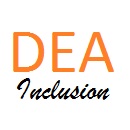We here at USC recently became members of the Common App family. During the summer, our staff takes the time to fill our test applications; to help our processing center make sure the system is working, but also so that we as admission counselors can see what students are actually going through as they apply to be a part of our institution. I strangely love filling out forms and enjoyed the task until I reached the ethnic identity questions. Suddenly, I had flashbacks of being young and confused, thinking to myself “which box am I supposed to check?”
Things have changed since the days when I had to fill out these forms. Now, students have the option to check all that apply, or not disclose this information if they so choose. This obviously reflects the quickly changing demographics in which more and more, people are embracing their multicultural identities and are finally able to recognize their diversity. But I always found one thing to be difficult about choosing how to identify: I’m bigger than the box the world is trying to place me in. I always felt that my story of choosing how to identify deserved more than a box, and the process of getting to a place where I can check Black without hesitation and assert that identity was not always linear or forward moving. Rather, it needed to be explained in order to be understood. Here on the Inclusion Series, we’ve had different articles posted about the process of self-identification for students of color as well as the process of negotiating multiple identities in a complex world. I would urge each reader to consider, as college admission counselors, what role do we play in that process? How do we use that information to support our students? What does choosing to identity in a certain way really mean to our students?
Establishing your racial or social identity can be a significant, tumultuous and perplexing process. Understanding this can help those of us in admission and other areas of education contextualize those experiences when students share them with us. When students speak to their experiences and stages of racial identity development, whether it be in a personal statement, a conversation in your office or an overheard comment, that’s a powerful, significant moment that should not be overlooked. Particularly within admissions, where we look for critical thinking, maturity, and a student’s ability to communicate amongst other criteria which aren’t always tangible, for underrepresented students, these truths and identities are showcasing those concepts. Now it may seem strange to consider checking a box as evidence of critical thinking, but this is the reality for marginalized groups during their stages of development, asserting a sense of self and security in the person that student declares themselves to be. My advice? Encourage your students to learn who they are, to have confidence is checking their box(es), discuss the importance of not trying to be anyone but themselves and support them for being honest about who that self is.
By Kendall Williams
To learn more about racial identity development:
Stages of Racial Identity Development
Student Development Theory Overview
Racial Identity Development: Understanding Racial Dynamics in College Classrooms and on Campus

